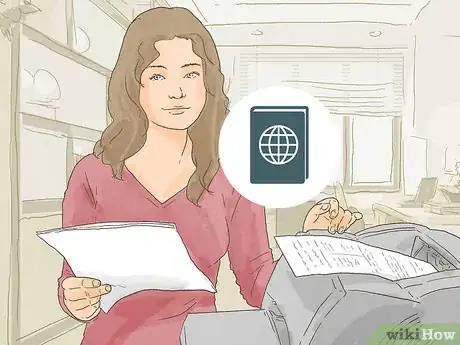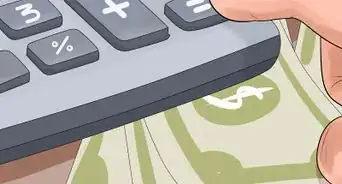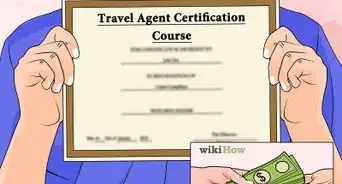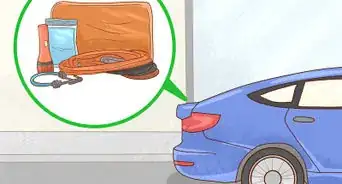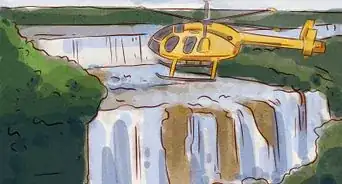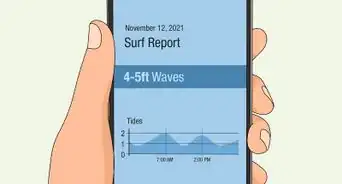This article was co-authored by Allyson Edwards. Allyson Edwards graduated from Stanford University with a BA in International Relations. Afterwards, she went on to facilitate International partnerships with agencies in over twenty countries, and has consulted for companies in industries across education, fintech, and retail.
There are 8 references cited in this article, which can be found at the bottom of the page.
This article has been viewed 223,127 times.
A travel itinerary outlines all elements of a trip, from hotel stops to destinations. It can be indispensable, whether you’re planning a weekend vacation or an extended road trip. A good itinerary gives a trip structure, and maximizes the amount you’ll be able to see and do. Though it seems a daunting task, an itinerary is simple to develop. With your basic travel information and a map, you can plan an entire trip out in an efficient and organized manner.
Steps
Planning and Mapping Your Itinerary
-
1Collect the important information for your trip. Flight numbers, hotels, car rentals, and restaurant reservations are all key pieces of information to manage and maintain. You may also want to include directions to your hotel, the car rental company you are using, as well as directions to the airport for your return flight.
- If you will be using airport transportation to get to your hotel, include information about fees and hours of operation.
-
2Make a list. It’s helpful to list all of the things you want to do on your trip. Even if it's more than you think you can manage, create a list of everything you'd like to do. Research local events, holidays, and observances of the places you're traveling to as well. You may be able to witness or experience a cultural event that other travelers don't get to experience.[1]
- Be conscious of the amount of time you will spend at each stop. Certain destinations, like the Museum of Modern Art, can be an all-day endeavor.
- If you’re traveling with one or more people, be sure to get feedback and ideas for your destinations.
Advertisement -
3Map your stops. Match your stops to specific locations on a map and note their locations. Try and map them sequentially to efficiently use your travel time. You’ll most likely be traveling from adjacent cities as you travel. For each activity, estimate the length of time it will take to get to there, and how long you will be there. [2]
- Be sure you have local maps for the areas you will be exploring. It is also helpful to obtain schedules for bus and train services and numbers for local taxis.
- Make sure that the maps are up-to-date. Cities and other areas change often. A road that existed 10 years ago may no longer exist today.
-
4Create a budget. Do you want a trip with days spent at four star restaurants and nights spent in five star hotels? Or are you more interested in finding local favorites and rustic B&Bs? Your vacation is as expensive (or inexpensive) as you want it to be. It ultimately comes down to what you can afford.
- A spreadsheet program like Microsoft Excel can help create an organized and portable budget and itinerary.[3]
- Alternatively, consider using a budgeting app or website. The downside is that this may not be as portable, especially if you don't have Wi-Fi access.
-
5Stay flexible. Don’t hesitate to give yourself a free day or two. You can use this free day to explore, or take some time off to rest. Ultimately your itinerary is a guide to keep you on track while visiting. If you miss a reservation, it isn’t the end of the world. Consider asking around about a local favorite to eat at, find a local market, or see if there’s a museum or oddity nearby.[4]
- Consider having some back-up plans. For example, if you make a reservation, have a few other places to eat at in mind, just in case you miss it.
- Never lose sight of the fact that your trip is supposed to be an enjoyable and fulfilling experience.
Organizing Your Itinerary
-
1Record your information. Record your check in times, confirmation numbers, hotel names, and any other information you might need on hand. Don’t worry about organizing this information yet. In the meantime, focus on accumulating and documenting as much helpful information as you can think of.
-
2Organize your travel information. Try and condense your travel information into a single document for easy access while traveling. Keep a printed copy or type the details of your itinerary into a word processing document.
- If you prefer, you can use an online travel itinerary template. This will give you a basic set-up, so all you have to do is fill in the blanks.
- You may also consider downloading a travel app to keep organized during your trip.[5]
-
3Keep a hard-copy. Your travel itinerary can be placed into a 3-ring binder. As convenient as an app can be, batteries can die. It never hurts to keep a physical backup handy. Use page dividers to separate documents in your trip binder into categories (rental car, tours, hotel reservations, etc.).
- Keep your page dividers labeled. If they have tabs on them, write the category name on the tab in clear, legible writing.
- Another alternative is a multi-pocket folder or a multi-section accordion folder.
-
4Create a database. Compile a print-out or Notepad note of information for your emergency contact(s) back home, and any special medical needs you or your travel companions may have.
- If you are traveling out of the country, include the address, telephone number, and directions to your country's embassy or consulate if applicable.
- You may want to save a list of addresses of family and friends, so you can send them postcards from the destinations you will visit.
-
5Account for your responsibilities. Even if you will only be gone for a weekend, it’s a good idea to make sure that everything at home will be in order and accounted for. If you have pets, plants, or will need your mail checked for an extended amount of time, ensure that a friend or family member will be there to do so. This will ultimately offer you peace of mind so you can relax and fully enjoy your vacation.
- If you can't find someone to come over and feed your pets, see if they can stay at a friend's house or in a pet boarding home.
- If someone can't come over to water your plants, consider lending them to a friend or neighbor for a week.
5 Day Travel Itinerary Template
Community Q&A
-
QuestionHow important is an itinerary?
 Community AnswerIt depends on what kind of a person you are. If you want to be adventurous and don't mind needing to sleep on a bench or a train, it's not important. If you want any control over your trip, it is rather important.
Community AnswerIt depends on what kind of a person you are. If you want to be adventurous and don't mind needing to sleep on a bench or a train, it's not important. If you want any control over your trip, it is rather important. -
QuestionDon't I need a passport or equivalent to create an itinerary?
 Community AnswerYou don't need a passport to create an itinerary. You need a passport for international travel.
Community AnswerYou don't need a passport to create an itinerary. You need a passport for international travel.
References
- ↑ http://www.independenttraveler.com/travel-tips/troubleshooting/how-to-create-the-perfect-itinerary
- ↑ http://traveltips.usatoday.com/plan-travel-itinerary-27657.html
- ↑ http://www.seat61.com/spreadsheet.htm
- ↑ https://www.tripit.com/blog/2015/07/4-steps-for-creating-the-perfect-travel-itinerary-template.html
- ↑ http://lifehacker.com/five-best-travel-planning-apps-1470002139
- ↑ http://www.lonelyplanet.com/
- ↑ https://www.roughguides.com/
- ↑ https://www.tripadvisor.com
About This Article
If you want to create a travel itinerary, first gather your flight numbers, hotel and car rental details, and any restaurant reservations you’ve made. Once you have the broad outlines of your comings and goings, make a list of everything you want to see and do. You can then figure out how and when to fit everything into your vacation days. Try to map your stops sequentially so you don’t waste time doubling back or driving around in circles. Just remember to build in a couple of free days to explore a little-known local treasure or put your tired feet up! For tips on how to organize your itinerary and why to keep it on paper as well as in the cloud, read on!






